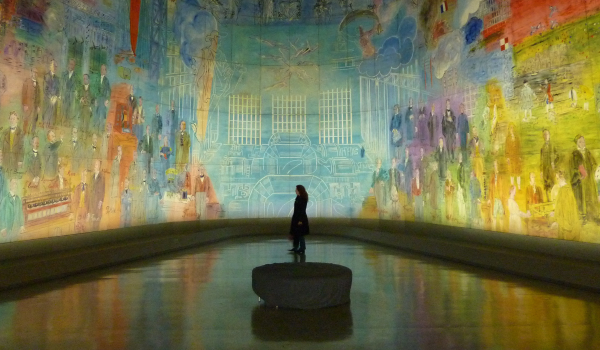Museums have long been regarded as bastions of knowledge, preserving and presenting the rich tapestry of human history, art, and culture. However, as we navigate the ever-evolving landscape of inclusivity, it becomes imperative to question whether these treasure troves of human achievement are genuinely accessible to all.
Historically, museums were often perceived as exclusive spaces, catering to specific demographics and failing to represent the diverse narratives that weave the fabric of our society. Fortunately, the winds of change are blowing, and museums are actively engaging in transformative practices to become more inclusive.
Breaking Down Barriers
Physical Accessibility: Many museums are working to ensure physical accessibility, eliminating barriers that may hinder individuals with disabilities from thoroughly enjoying exhibits. From ramps to sensory-friendly spaces, efforts are being made to create a welcoming environment for everyone.
Cultural Representation: In many settings, diverse voices and perspectives are being embraced, challenging the traditional narratives that may have overlooked or marginalized specific communities. These museums seek to tell a more comprehensive and inclusive story of our shared history.
Affordability and Outreach Programs: Recognizing that financial constraints can hinder access, some museums are implementing affordability initiatives, such as reduced admission fees, free days, and outreach programs to engage with underserved communities.
Challenges on the Path to Inclusivity
While significant strides have been made, challenges persist. Limited resources, systemic biases, and the need for ongoing education present hurdles that demand a collective effort to overcome. Including communities that have long felt excluded or unwelcome in museum spaces in the conversation around more inclusive practices is an essential way museums can unlearn harmful biases, educate themselves on community needs, and share available resources.
Addressing Systemic Biases
Representation Gaps: Despite significant strides in this area, many museums struggle with representation gaps in their collections and exhibitions. Efforts are underway to rectify this, with a commitment to acquiring and showcasing diverse art and artifacts.
Educational Initiatives: Museums invest in educational programs to foster a more inclusive understanding of history and culture. They aim to reach audiences beyond their physical walls by collaborating with schools and community organizations.
Your Role in the Inclusivity Narrative
As members of your own community, you play a crucial role in shaping the narrative of inclusivity within museums. Here are a few ways you can contribute:
- Spread the Word: Share your experiences and thoughts on social media. Amplify the message of inclusivity and celebrate museums that are leading the charge.
- Engage in Conversations: Participate in discussions about inclusivity within museums. Your insights and perspectives contribute to the ongoing dialogue.
- Support Inclusive Initiatives: Consider supporting museums that actively pursue inclusivity through your attendance, memberships, and donations.
Looking Ahead
The question, “Are Museums for Everyone?” is a dynamic one, sparking conversations that lead to positive change. Museums are evolving, striving to dismantle barriers and redefine themselves as spaces that genuinely belong to everyone.
In the spirit of inclusivity, let’s continue this journey together. Museums can unite us, inspire us, and foster a deeper understanding of our shared humanity. As we explore the past, present, and future within these hallowed halls, let’s ensure that spaces are accessible and welcoming to everyone and the narrative told is one that embraces and reflects the diversity of all.




